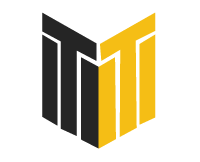In today’s digital-first world, your personal brand is your reputation. Whether you’re a professional, entrepreneur, or creative, how you show up online can influence career opportunities, partnerships, and even the trust customers place in you. Social platforms like LinkedIn, Instagram, Twitter (X), and TikTok have made it easier than ever to build, amplify, and showcase a personal brand.
But creating a strong personal brand doesn’t happen overnight—it requires a strategic step-by-step process. This guide will walk you through the exact stages of building and maintaining your personal brand through social platforms.
1. Define Your Personal Brand Identity
Before you start posting, you need clarity on who you are and what you stand for.
Ask yourself:
-
What are my skills, strengths, and passions?
-
What values do I want to communicate?
-
Who is my target audience—employers, clients, collaborators, or a niche community?
-
What problems do I solve for others?
👉 Example: If you’re a freelance graphic designer, your personal brand may highlight creativity, reliability, and innovation in design.
2. Choose the Right Social Platforms
Not all platforms serve the same purpose. Pick the ones that best align with your goals.
-
LinkedIn: Best for professionals, career growth, and B2B networking.
-
Instagram: Great for visual storytelling, creative portfolios, and lifestyle branding.
-
Twitter (X): Ideal for thought leadership, quick insights, and community engagement.
-
TikTok: Perfect for reaching younger audiences through short-form video content.
-
YouTube: Long-form platform for tutorials, storytelling, and personal authority building.
👉 Tip: Start with 1–2 platforms you can manage consistently, rather than spreading yourself too thin.
3. Optimize Your Profiles for Branding
Your social profile is your digital business card. Ensure it’s professional, polished, and aligned across platforms.
-
Profile Picture: Use a high-quality, professional photo (clear, confident, approachable).
-
Cover Photo/Banner: Add visuals that reflect your industry or personal brand values.
-
Bio/Headline: Clearly state who you are, what you do, and how you add value.
-
Links: Direct followers to your website, portfolio, or key content.
👉 Example: A LinkedIn headline like “Helping startups grow through data-driven digital marketing strategies” is stronger than just “Digital Marketer.”
4. Create Valuable, Consistent Content
Content is the engine that drives personal branding. Focus on creating value-driven content that educates, entertains, or inspires.
Types of content to post:
-
Educational Posts: Tips, tutorials, “how-to” content in your niche.
-
Thought Leadership: Share opinions on industry trends.
-
Storytelling: Personal experiences, failures, and lessons learned.
-
Behind-the-Scenes: Show authenticity by sharing your process.
-
Visual Content: Infographics, reels, and carousels to boost engagement.
👉 Rule: Follow the 80/20 principle—80% valuable content for your audience, 20% self-promotion.
5. Establish a Content Calendar
Consistency builds trust. Plan your posts in advance with a content calendar.
-
Daily/Weekly Posts: Choose a realistic schedule (e.g., 3–4 posts per week).
-
Content Themes: Assign categories (Motivation Mondays, Tutorial Tuesdays, etc.).
-
Repurposing Content: Turn a blog post into LinkedIn posts, Twitter threads, and Instagram carousels.
👉 Tools like Buffer, Hootsuite, or Notion help streamline scheduling.
6. Build Authentic Engagement
Social media is about conversations, not just broadcasting.
-
Reply to comments and messages.
-
Engage with others’ content (like, comment, share).
-
Join groups, hashtags, and niche communities.
-
Collaborate with influencers or peers in your space.
👉 Example: On LinkedIn, don’t just post—comment thoughtfully on industry leaders’ posts to expand visibility.
7. Showcase Social Proof
Personal branding is stronger when backed by credibility. Use your platforms to highlight achievements and testimonials.
-
Share client feedback or recommendations.
-
Highlight case studies or portfolio work.
-
Post about speaking engagements, collaborations, or certifications.
-
Leverage user-generated content if you’re in the creative or product space.
👉 Example: A freelancer can post before-and-after visuals of a client’s project, demonstrating impact.
8. Use Analytics to Refine Strategy
Most platforms provide analytics—use them to see what works and what doesn’t.
-
Engagement Rate: Are people liking, commenting, sharing your posts?
-
Reach/Impressions: How many people see your content?
-
Follower Growth: Are you attracting the right audience?
-
Content Performance: Which types of posts get the best response?
👉 Double down on what works—whether it’s reels, carousels, or thought-leadership posts.
9. Maintain a Consistent Personal Brand Voice
Your voice should be authentic and recognizable. Decide if you want to sound:
-
Professional & formal
-
Friendly & conversational
-
Bold & disruptive
-
Inspirational & motivational
👉 Example: Gary Vaynerchuk’s brand voice is raw and motivational, while Simon Sinek’s is thoughtful and inspirational.
10. Stay Authentic & Evolve
The most powerful personal brands are genuine. Don’t try to be someone you’re not—audiences can sense inauthenticity. Share real wins, struggles, and insights.
Also, remember that branding evolves as your career and goals grow. Review and refresh your brand identity every 6–12 months.
11. Mistakes to Avoid in Personal Branding
-
Being inconsistent across platforms.
-
Overpromoting yourself without adding value.
-
Ignoring audience engagement.
-
Copying someone else’s style or tone.
-
Posting without a strategy or goal.
👉 Building a personal brand is a marathon, not a sprint.
12. Case Studies: Successful Personal Branding
-
Richard Branson (LinkedIn): Builds brand around leadership, adventure, and innovation.
-
Chris Do (Instagram & YouTube): Mixes design tutorials with business advice.
-
Marie Forleo (YouTube & Instagram): Focuses on empowerment, entrepreneurship, and personal development.
Each has a clear niche, consistent visuals, and a strong voice.
Final Thoughts
Personal branding through social platforms is one of the most powerful ways to control your narrative and expand your opportunities. By defining your identity, optimizing your profiles, creating consistent content, and engaging authentically, you’ll establish yourself as a trusted voice in your industry.
